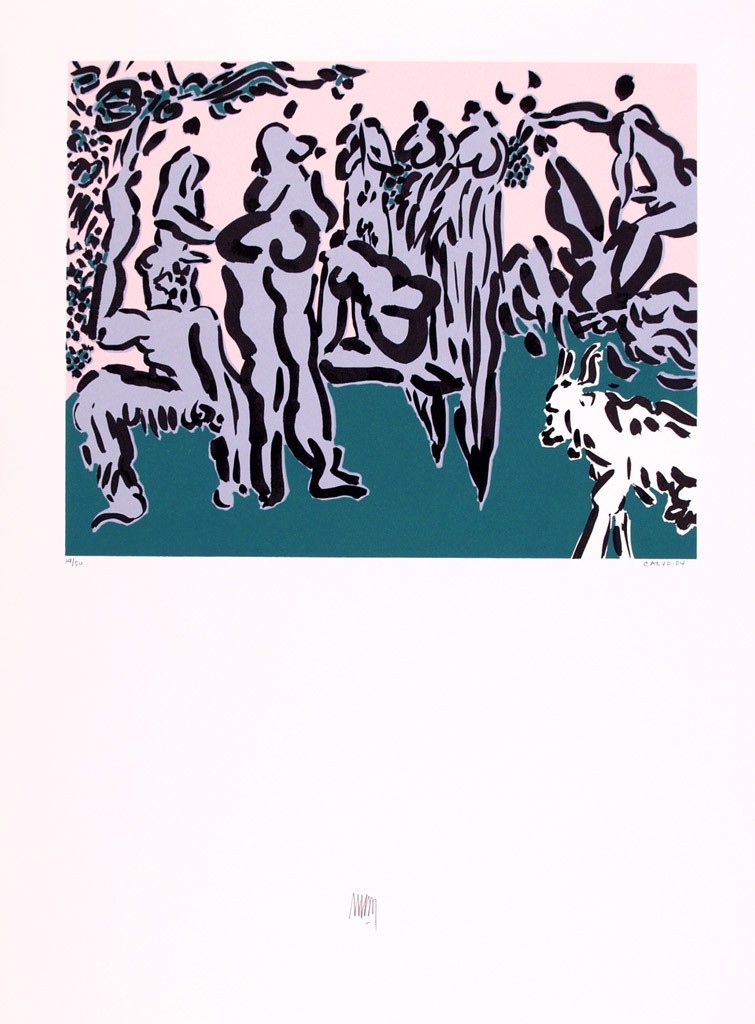Manolo Calvo Abad was born in 1934, in Oviedo, Asturias, Spain. A pioneer of geometric abstraction in Spain, he began by being a self-taught artist and whose artistic trajectory starts from a figuration steeped in fauvism and post-cubism, avant-garde with the which he became familiar with on a trip to Paris in his youth. Upon returning to Spain, he joined the experimental and research movement of the 1950s.
Like other artists and groups, Manolo Calvo reacted against informalism, preferring a rational and geometric option, and between 1957 and 1964 he created his geometric series. In 1960 he participated in Valencia in the First joint exhibition of Spanish normative art, organized by the Parpalló Group, which joined Equipo 57, Equipo Córdoba and José Maria de Labra. The axis of his work is; The dynamics of the module, which reorganizes the shapes. A principle of economy of language leads him to use only white and black, as well as the circle and square as basic shapes. Its work focuses in the concepts of repetition and difference.
In 1966 he carried out experiments with electronics, creating his series Artilugios, which required the participation of an audience. After a trip to Brazil, Calvo gives After completing his geometric stage, he began his Brazilian series that covers the second half of the 1960s. His work adopts a stance of social and political criticism, and his painting returns to art. human figure. He begins to carry out social actions in peripheral neighborhoods of Madrid, and also dedicates himself to social work. sculpture, experimenting with different types of materials.
The series, La fertilidad de la allegoría, appeared between 1972 and 1975, based on variations on a painting by Jacob Jordaens. He also created sets for theater plays by Brecht, Adamov and Arrabal, as well as illustrations and artistic consultancy work in cinema.
Manuel Calvo's work distances itself from any commercial meaning of painting, and is is the result of continuous plastic experimentation in the most diverse aspects, styles and trends, from realism to realism. to spatialism, always with undoubted quality, with honest intention, with clear command of the technique and with undeniable talent. Its stage of figurative realism follows a clear purpose of manipulating plastic keys in order to consummate a social denunciation. His work appears in numerous museums and important collections.
He passed away on October 25, 2018, in Madrid.
Centro Português de Serigrafia © 2025
Thank you very much for subscribing the CPS newsletter.
